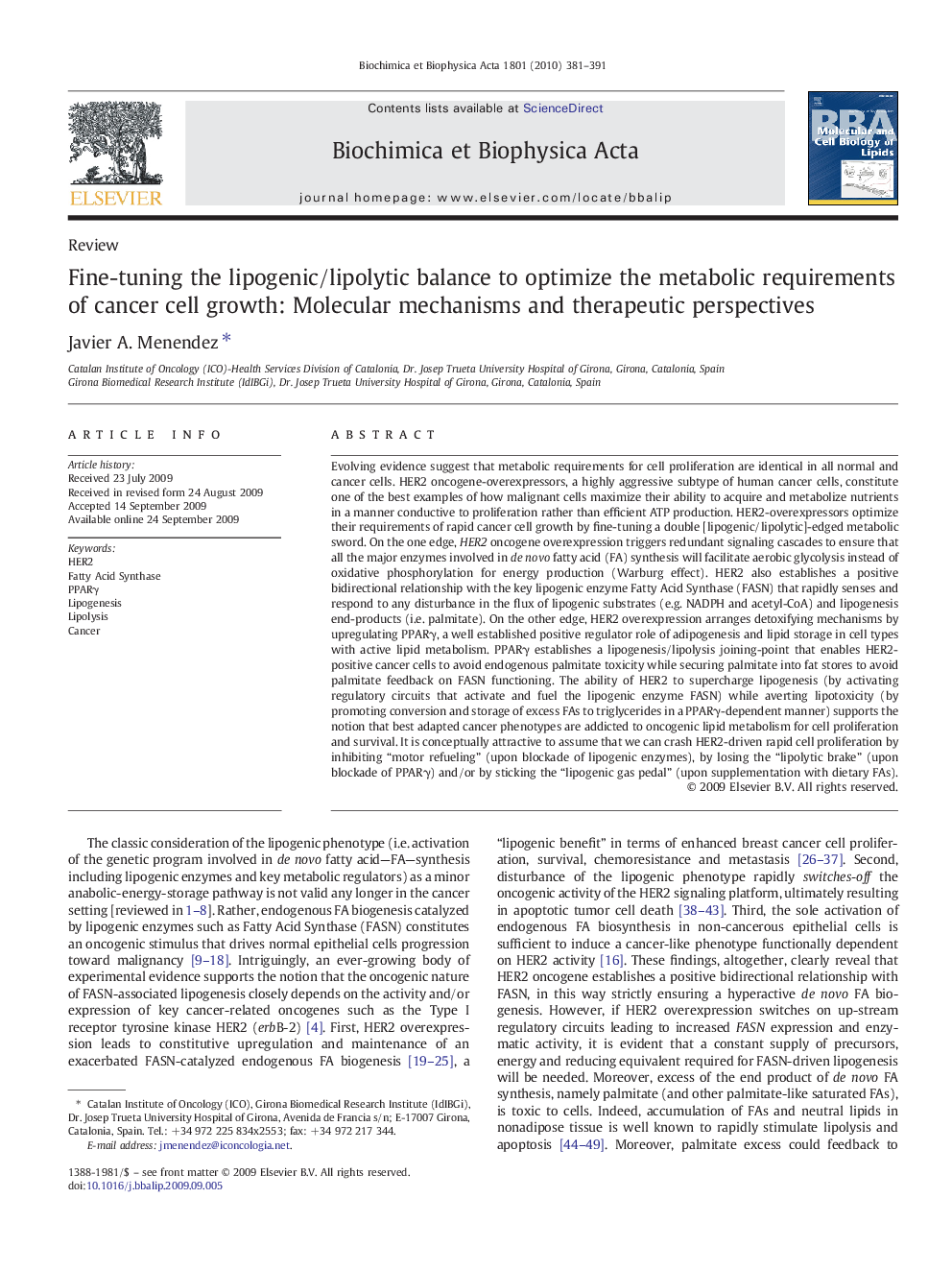| کد مقاله | کد نشریه | سال انتشار | مقاله انگلیسی | نسخه تمام متن |
|---|---|---|---|---|
| 1949819 | 1537779 | 2010 | 11 صفحه PDF | دانلود رایگان |

Evolving evidence suggest that metabolic requirements for cell proliferation are identical in all normal and cancer cells. HER2 oncogene-overexpressors, a highly aggressive subtype of human cancer cells, constitute one of the best examples of how malignant cells maximize their ability to acquire and metabolize nutrients in a manner conductive to proliferation rather than efficient ATP production. HER2-overexpressors optimize their requirements of rapid cancer cell growth by fine-tuning a double [lipogenic/lipolytic]-edged metabolic sword. On the one edge, HER2 oncogene overexpression triggers redundant signaling cascades to ensure that all the major enzymes involved in de novo fatty acid (FA) synthesis will facilitate aerobic glycolysis instead of oxidative phosphorylation for energy production (Warburg effect). HER2 also establishes a positive bidirectional relationship with the key lipogenic enzyme Fatty Acid Synthase (FASN) that rapidly senses and respond to any disturbance in the flux of lipogenic substrates (e.g. NADPH and acetyl-CoA) and lipogenesis end-products (i.e. palmitate). On the other edge, HER2 overexpression arranges detoxifying mechanisms by upregulating PPARγ, a well established positive regulator role of adipogenesis and lipid storage in cell types with active lipid metabolism. PPARγ establishes a lipogenesis/lipolysis joining-point that enables HER2-positive cancer cells to avoid endogenous palmitate toxicity while securing palmitate into fat stores to avoid palmitate feedback on FASN functioning. The ability of HER2 to supercharge lipogenesis (by activating regulatory circuits that activate and fuel the lipogenic enzyme FASN) while averting lipotoxicity (by promoting conversion and storage of excess FAs to triglycerides in a PPARγ-dependent manner) supports the notion that best adapted cancer phenotypes are addicted to oncogenic lipid metabolism for cell proliferation and survival. It is conceptually attractive to assume that we can crash HER2-driven rapid cell proliferation by inhibiting “motor refueling” (upon blockade of lipogenic enzymes), by losing the “lipolytic brake” (upon blockade of PPARγ) and/or by sticking the “lipogenic gas pedal” (upon supplementation with dietary FAs).
Journal: Biochimica et Biophysica Acta (BBA) - Molecular and Cell Biology of Lipids - Volume 1801, Issue 3, March 2010, Pages 381–391